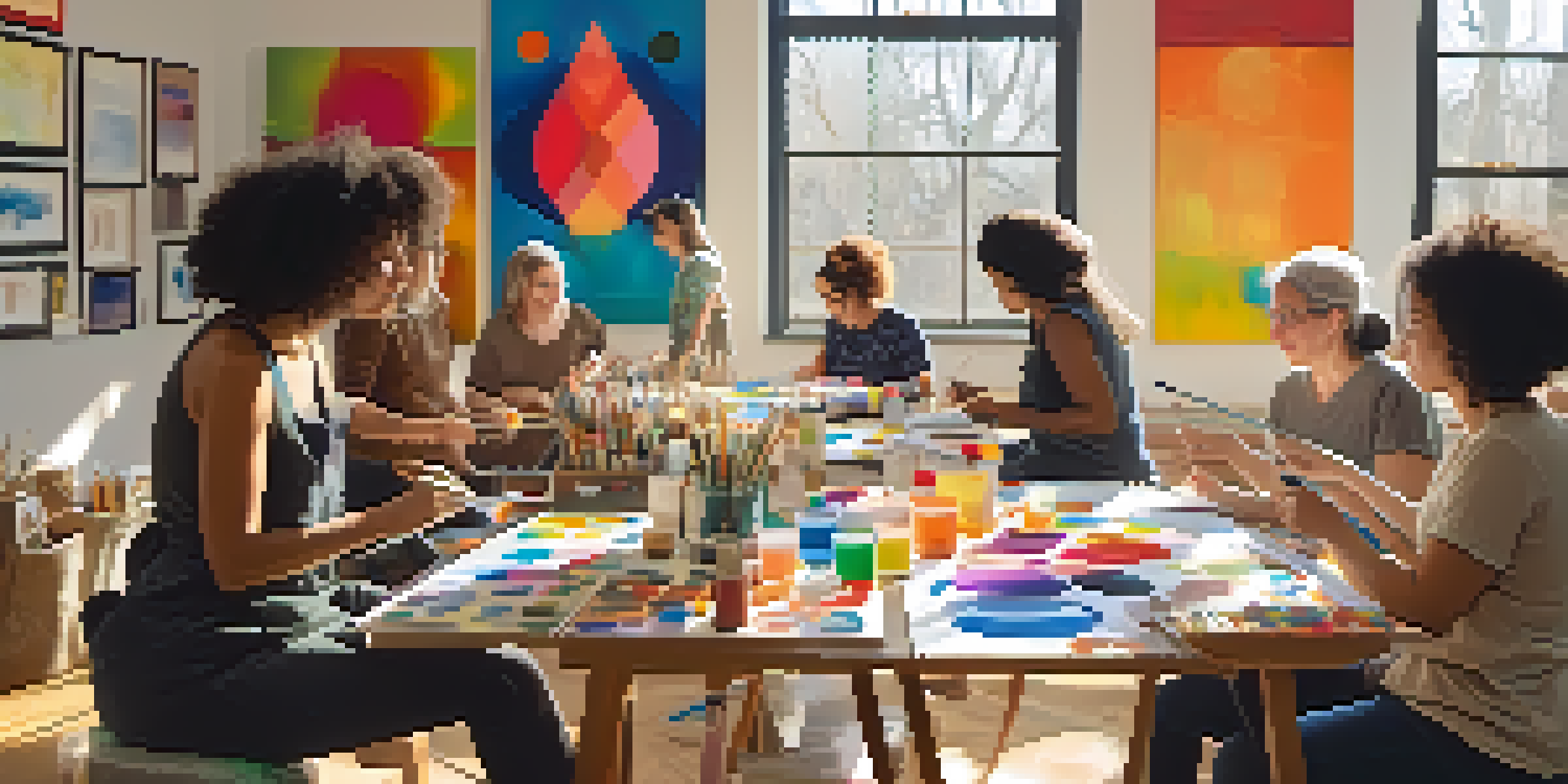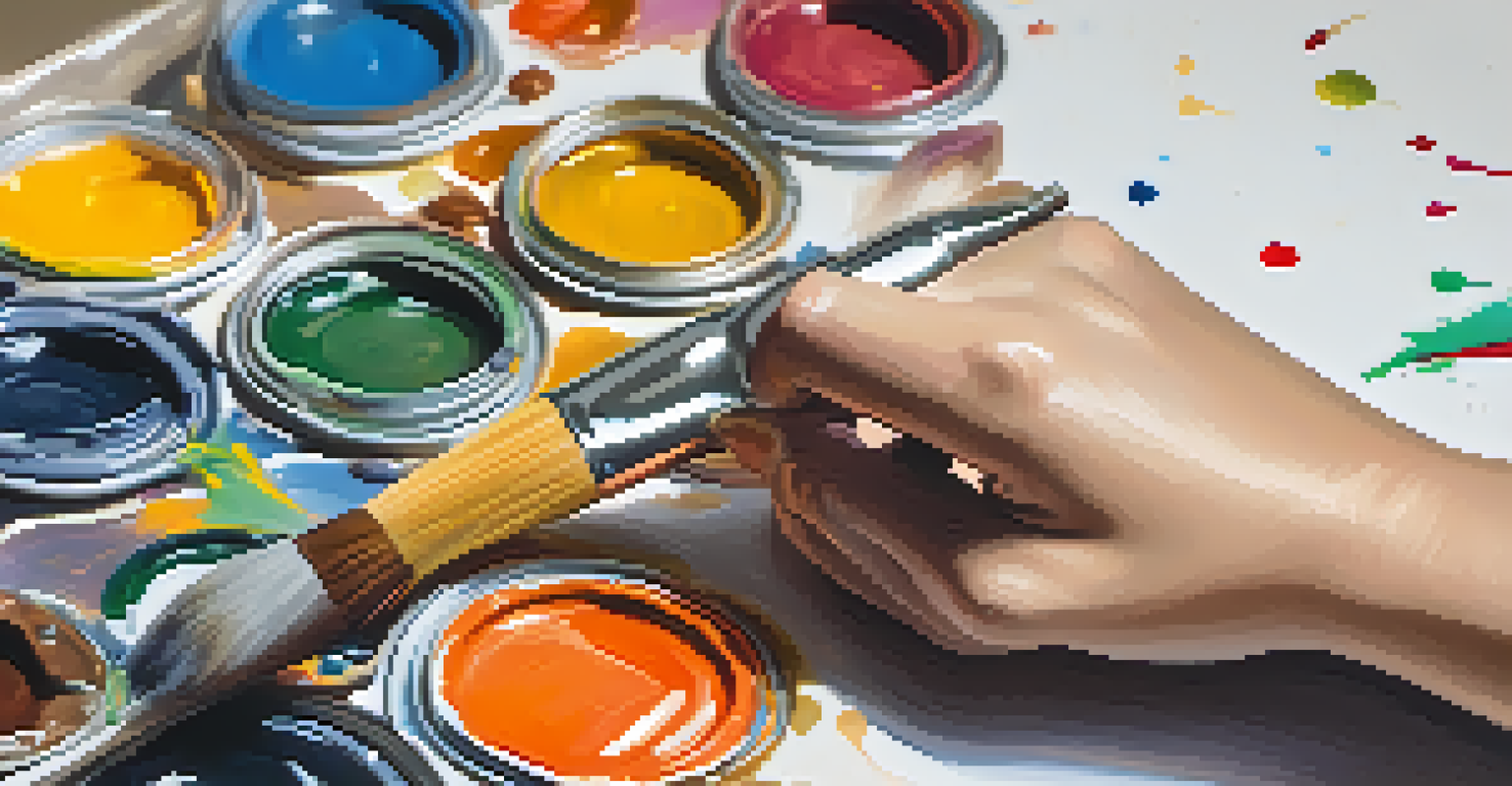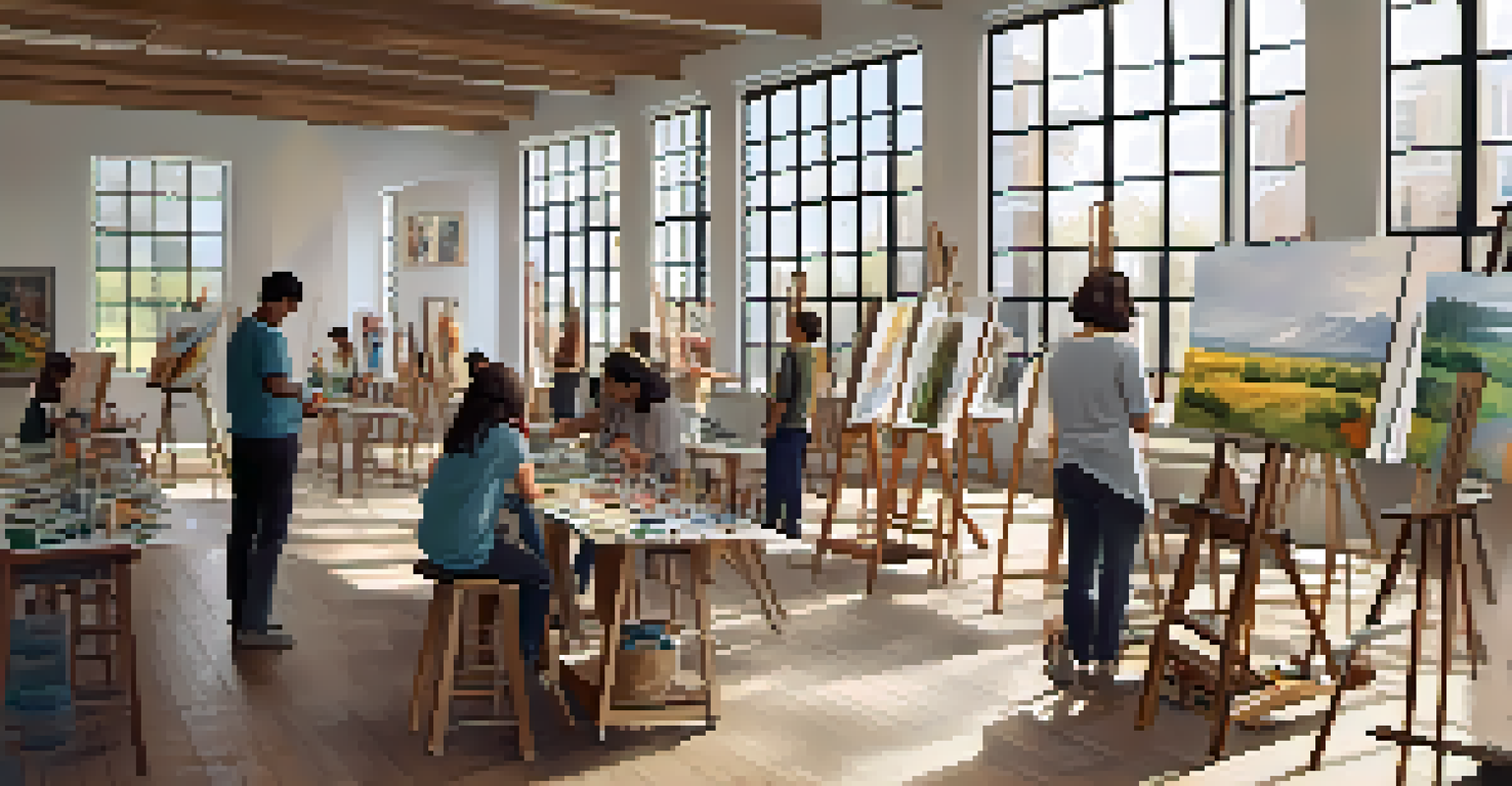Exploring Art's Role in Emotional Expression During Recovery

Understanding Emotional Expression Through Art
Art serves as a powerful medium for expressing emotions that words often fail to capture. It allows individuals to convey their feelings in a visual or auditory form, making it an invaluable tool during recovery. Whether it’s painting, music, or dance, these forms of expression help to articulate complex emotions such as grief, joy, or confusion.
Art is not freedom from discipline, but disciplined freedom.
During recovery, individuals frequently encounter a whirlwind of feelings that can be overwhelming. Art provides a safe space to explore and process these emotions, offering an outlet for distress and a pathway to healing. For instance, creating a painting can serve as a cathartic release, allowing one to channel pent-up feelings onto the canvas.
Moreover, engaging with art can foster self-discovery and personal insight. By reflecting on their creations, individuals can gain a better understanding of their emotional states, leading to greater self-awareness and growth. This journey of exploration ultimately enhances the recovery experience.
Art as a Therapeutic Tool in Recovery Settings
In many therapeutic settings, art therapy has become a cornerstone for emotional healing. Licensed art therapists utilize creative activities to help clients express themselves in a non-threatening way. This approach not only nurtures creativity but also encourages open dialogue about feelings and experiences.

Art therapy sessions often involve structured activities, such as drawing, sculpting, or collage making. These activities can help individuals articulate emotions that might be difficult to verbalize. For example, someone recovering from trauma might find it easier to depict their experiences through imagery rather than discussing them directly.
Art as a Healing Medium
Art provides a powerful outlet for expressing complex emotions, aiding individuals in their recovery journeys.
Additionally, the therapeutic benefits of art extend beyond individual expression. Group art therapy can foster a sense of community and support, enabling participants to connect over shared experiences. This camaraderie can significantly enrich the recovery process, making individuals feel less isolated in their struggles.
The Science Behind Art and Emotional Well-Being
Research supports the notion that engaging in art can lead to improved emotional well-being. Studies show that creative activities can reduce anxiety, depression, and stress. When individuals immerse themselves in artistic processes, their brains release dopamine, a neurotransmitter linked to feelings of pleasure and reward.
The greatest respect an artist can pay to music is to give it life.
Moreover, art encourages mindfulness—a state of being fully present in the moment. Engaging in creative practices allows individuals to focus their thoughts and feelings, promoting a sense of calm and clarity. This mindfulness can be particularly beneficial during recovery, as it helps individuals navigate their emotions more effectively.
As science continues to uncover the benefits of art in emotional expression, more healthcare providers are integrating creative approaches into recovery programs. This growing recognition highlights the importance of art as a vital component of holistic healing strategies.
Personal Stories: Art in Recovery Journeys
Personal stories of recovery often highlight the transformative power of art. For many individuals, creativity becomes a lifeline, offering solace and a means to cope with their experiences. One individual might share how painting helped them process their feelings after a significant loss, allowing them to find peace through color and form.
Another person may recount how writing poetry provided them with a voice during a difficult recovery, turning their pain into powerful verses. These narratives serve as a testament to art's ability to resonate with our deepest emotions and help us navigate the complexities of recovery.
Community Support Through Art
Group art therapy fosters connection and support, helping individuals feel less isolated in their struggles.
These personal accounts underscore the diverse ways art can play a role in healing. Each story is unique, yet they collectively illustrate how creative expression can bridge the gap between suffering and recovery, ultimately leading to a renewed sense of self.
Accessibility of Art for Emotional Expression
One of the most remarkable aspects of art is its accessibility. You don’t need to be a professional artist to benefit from creative expression; anyone can pick up a paintbrush or write in a journal. This democratization of art allows individuals from all walks of life to engage with their emotions and explore their creativity.
Community art programs, workshops, and online resources are widely available, making it easier than ever to find a creative outlet. These resources often emphasize inclusivity, welcoming participants regardless of skill level. This openness encourages people to experiment and express themselves without fear of judgment.
The accessibility of art not only fosters individual expression but also promotes a shared sense of community. By participating in group activities or local art fairs, individuals can connect with others who are on similar healing journeys, further enhancing the emotional benefits of art.
Integrating Art into Daily Recovery Practices
For those on a recovery journey, integrating art into daily life can be incredibly beneficial. Setting aside time for creative activities can serve as a grounding practice, helping individuals to process their emotions on a regular basis. Whether it’s sketching in a notebook or experimenting with cooking, daily creativity can provide a sense of purpose and joy.
Additionally, art doesn't need to be time-consuming or elaborate. Simple practices, such as doodling or coloring, can significantly contribute to emotional healing. The key is to engage with art mindfully, allowing oneself the freedom to create without pressure or expectation.
Accessibility of Creative Expression
Art is accessible to everyone, allowing individuals from all backgrounds to explore their emotions creatively.
By making art a part of one’s routine, individuals can cultivate resilience and emotional awareness. This consistent engagement with creativity can enhance their overall well-being, making it a vital aspect of the recovery process.
Future Directions: Art and Emotional Recovery
Looking ahead, the role of art in emotional recovery continues to expand. As we learn more about the therapeutic benefits of creativity, there’s a growing movement to incorporate art into various recovery programs, including mental health, addiction, and trauma recovery. This evolution reflects a broader understanding of what healing can look like.
Innovative approaches, such as virtual art therapy, are emerging, allowing individuals to access resources and support from the comfort of their homes. This adaptability is especially important in today’s world, where accessibility and convenience can significantly impact recovery journeys.

As we explore the intersection of art and emotional healing, it’s crucial to recognize the unique ways individuals connect with creativity. The future promises exciting possibilities for blending art with therapeutic practices, ultimately enhancing emotional expression and supporting those on their recovery paths.